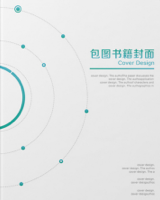Comparative effectiveness of multiple acupuncture therapies for primary insomnia: a systematic review and network meta-analysis of randomized trial
Junqiang Niu;Jinhui Tian;Long Ge;
Background: Acupuncture has been widely practiced for primary insomnia (PI). However, the relative benefit and harm among acupuncture therapies remain uncertain.Objectives: To compare and evaluate the effect differences of multiple acupuncture therapies for patients with PI.Methods: Systematic literature search for randomized controlled trials (RCTs). Pairs of reviewers independently conducted literature screening, data extraction, and risk of bias assessment. Meta-analysis was conducted using R and Stata software. The Grading of Recommendations Assessment, Development, and Evaluation system (GRADE) was used to assess certainty of evidence and interpret results.Results: Fifty-seven RCTs with 4678 patients were included. Compared with usual treatment, multiple acupuncture therapies showed a better effect for Pittsburgh sleep quality index score. And acupoints catgut embedding (ACE) was proved to be the most effective with a moderate certainty of evidence; auricular acupressure or auricular acupuncture plus manual acupuncture (AP + MA), electroacupuncture plus acupoint application (EA + APA), and intradermal needle (IN) might be also the most effective with low certainty of evidence. ACE, ACE + MA, AP + MA, EA, EA + APA, HPN, MA and PBN + MA showed significantly improvement in effective rate when compared with usual treatment. Insufficient evidence reported on Epworth Sleepiness Scale, Athens Insomnia Scale, and recurrence rate. The most common slight adverse events mainly included hematoma, pain, headache, and bleeding.Conclusions: With moderate to low certainty of evidence, multiple acupuncture therapies showed impressive insomnia improvement, especially ACE, AP + MA, and EA + APA. Differences between therapies were small or insignificant and based-on low or very low certainty of evidence.(c) 2022 Elsevier B.V. All rights reserved.


